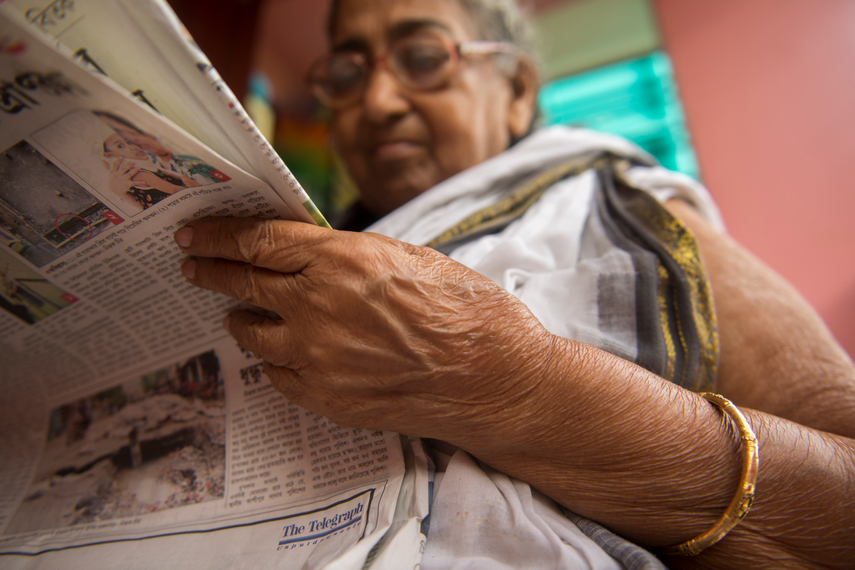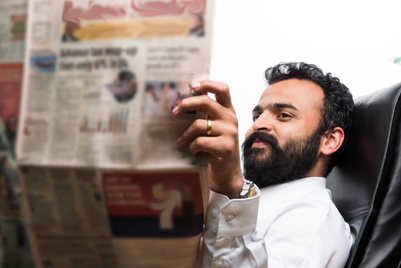
The central government is poised to raise its print-media advertisement rates by 26%, marking the first major increase since 2019. This move signals support for the stressed newspaper industry while also reflecting broader structural shifts in the Indian media ecosystem.
According to a report in The Indian Express, the rate uplift is expected once the Model Code of Conduct for the Bihar Assembly elections is lifted next month. A source in the Ministry of Information and Broadcasting (I&B) also told the publication that says television advertisement rates will be addressed subsequently.
The last upward adjustment came in January 2019, when I&B announced a 25 per cent increase over the rate structure set by the Bureau of Outreach & Communication (BOC), formerly the Directorate of Advertising & Visual Publicity (DAVP). That increase followed recommendations from the 8th Rate Structure Committee, which took into account rising newsprint prices and processing costs.
A new Rate Structure Committee was constituted in November 2021 to review the arrangement after the 2019 rates’ three-year validity expired. Yet, multiple rounds of consultations failed to yield action for nearly three years. Prior to 2019, the prior hike had been in 2013 — a 19% rise over the 2010 rate levels.
A long-overdue revision
The print medium has been under sustained pressure: advertising revenues are waning, input costs are elevated, and digital platforms are attracting budgets at an accelerating pace. In this context, the proposed increase appears explicitly aimed at reducing financial strain, particularly for small- and medium-sized publications, which depend heavily on government advertising to make ends meet.
The timing also aligns with evolving intentions of the government to bolster its communications ecosystem. Media reports indicate the I&B Ministry is working to integrate the Registrar of Newspapers for India (RNI), the Press Information Bureau (PIB) and the BOC under a more cohesive structure that seeks to streamline media outreach and policy execution.
A Crisil report had predicted buoyant growth in advertising revenue in FY2024, driven by strong localised demand from key advertising sectors, together with a loyal subscriber base. It had stated that this will lift the total revenue of regional print media companies by 8-9%.
The report noted that ad revenue, which contributes about two-thirds to the topline of regional print media companies, “has high correlation with economic sentiment and spending on advertisement by corporates as well as state and central governments”.
For those in the print sector, the 26% hike offers some immediate relief. Government advertising, for many smaller publications, acts as a lifeline. According to data, the government (via the Central Bureau of Communication) spent INR 967.46 crore on print-media advertisements from 2019-20 to 2023-24. That suggests government spend in print is meaningful. However, the shift of advertising volumes to digital and diminishing institutional support remains a concern for publishers.
Moreover, newsprint, which represents roughly 35–40% of print publishers’ operating expenses, has seen prices decline steadily as global demand remains muted and supply chains normalise. In FY2023, costs had surged by nearly 41%, driven by severe logistics disruptions linked to the Russia-Ukraine conflict, with Russia supplying over half of India’s imported newsprint. Since then, prices have eased considerably and are continuing on a downward trajectory.
The bigger media-mix picture
The print rate revision is taking place amid a broader recalibration of India’s ad-ex ecosystem. According to the GroupM TYNY (This Year Next Year) report, of the estimated total ad-expenditure of INR 1,64,137 crore in 2025, digital will command INR 99,137 crore. Television spends are expected to fall 1 per cent to INR 42,431 crore (26% of the total), while it forecast print to grow 4% and command 10% of total AdEx.
Data from the January-June 2025 period — via a report by Excellent Publicity in collaboration with TAM Media Research (TAM AdEx) and RCS India — indicated that print posted a 26% volume growth over 2023.
Vaishal Dalal, co-founder and director of Excellent Publicity, said: “What’s really interesting is how brands are navigating a delicate balance. TV still captures attention, radio keeps the connection local and relatable, print is earning back trust, and digital is becoming sharper and more targeted. The brands that truly succeed are the ones that recognise what each medium does best, while staying flexible, innovative, and creative.”
For brand marketers and agencies, the print rate hike signals both opportunity and caveats. The rise in rates does not alter the underlying shift of budgets to digital and the corresponding expectation of measurable, targeted outcomes. A higher rate simply restores one dimension of value for print.
What remains to be seen
Agencies working on media-mix must now weigh whether the government advertising footprint and any uplift in print rates changes the cost-benefit dynamic of print placements. For smaller publications, especially vernacular or regional ones, this could improve viability.
But for large national publications, the pressure remains: to innovate formats, monetise digital extensions, and integrate print-digital campaigns.
From the brand side, Dalal’s comment underscores a broader media-planning truth: successes arise from medium-specific strengths rather than chasing volume alone. Print still commands trust, and in particular regional vernacular editions may offer credible reach in markets where digital penetration is variable.
Several open questions merit attention. First, whether the rate hike will be fully passed through to publishers, and whether it will soften margin erosion meaningfully. Input-cost volatility (notably newsprint, logistics, labour, etc.) remains a headwind.
Second, whether this government move triggers accelerated innovation in print, such as augmented-reality extensions, QR-enabled print ads, and tighter integration with digital assets. The IMARC Group’s forecast indicates that print’s market size may shrink from $1.04 billion in 2024 to $0.82 billion by 2033, despite regional-language strength and digital fusion.
Third, the rollout timing and implementation details: the Model Code of Conduct must lift, after which a notification is expected post-November 15. Any delay or partial rollout (for example, limited to certain categories) will affect industry confidence.
Fourth, how television and other media will be treated. The print rate increase may set a precedent for broadcast and digital-adjacent spending; television ad rates have been flagged for revision later.
Finally, for agencies servicing print publishers and brands, the relevance of print beyond government advertising must be monitored. While government festive or election-cycle ad volumes may surge, sustainable growth will depend on private-sector reinvestment and innovation in print formats.
In sum, the government’s proposed 26% hike in print-ad rates constitutes a meaningful gesture toward traditional media at a time of flux. For publishers, it offers breathing space, for agencies, it offers a recalibrated cost base, and for brand marketers, it adds another data point in the evolving media-mix calculus.
That said, it does not reverse the tectonic shift of budgets towards digital; it merely adjusts the playing field slightly. The onus remains on publishers to modernise their offering, on agencies to rethink channel-specific advantages, and on marketers to ensure medium-specific value rather than defaulting to digital-only paradigms. In India’s fast-moving ad-ecosystem, support is helpful but not sufficient — adaptation is mandatory.



.jpg&h=334&w=500&q=100&v=20250320&c=1)
.jpg&h=334&w=500&q=100&v=20250320&c=1)
.jpg&h=334&w=500&q=100&v=20250320&c=1)

.jpg&h=334&w=500&q=100&v=20250320&c=1)





.jpg&h=268&w=401&q=100&v=20250320&c=1)



.jfif&h=268&w=401&q=100&v=20250320&c=1)
.jpg&h=268&w=401&q=100&v=20250320&c=1)
.jpg&h=268&w=401&q=100&v=20250320&c=1)
